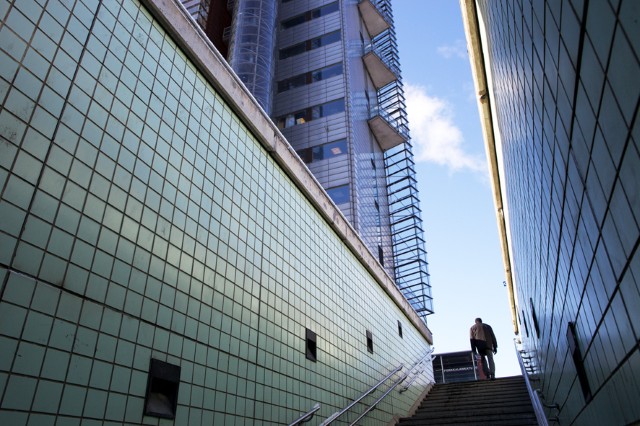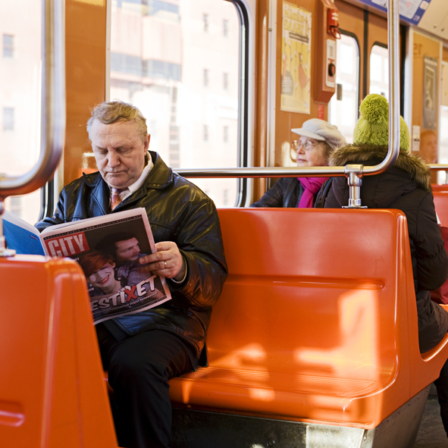The proportion of the population living in cities is increasing, meaning the role cities play, particularly in areas such as community planning, energy solutions and decision-making, is becoming ever more pronounced. The built environment will become ever denser and shared spaces will regain their popularity.
Urbanisation has a long history; its beginnings date back to around 3,000 BC, in Egypt and Mesopotamia. In Finland, urban development began at the turn of the 13th century, with the founding of Finland’s first town, Turku.
Prior to the industrial age, however, towns and cities were small. In the 1960s, urbanisation gathered speed based on an unprecedented structural transformation from a traditional rural society to a modern society offering plenty of work in industry and various service sectors.
More than 70% of the Finnish population now lives in towns and cities. In Europe, the corresponding number is almost identical, while around half the world’s population lives in urban areas. “According to estimates, in the near future, as many as four out of five Finnish people will live in cities,” says Erkki Aalto, Development Director at Finnish real estate analysts RAKLI. The corresponding global estimate is around 75%.
The urban environment is increasingly becoming our “natural” living environment. Tomorrow’s Finns will probably be born in towns and cities and live in them throughout their lives. How will cities and housing change in the near future and how will these changes shape our lives?
Housing density will increase
In the future, the residents of urban areas must adapt to living within the limits of the earth ’s carrying capacity. Trends such as community planning and the creation of a more communal basis for city living will soon increase in both Finland and around the world. Living in smaller apartments with higher housing density and making better use of the shared spaces and services provided by a city, such as saunas, gyms and public living rooms, would be a more ecological way to live. This trend is also driven by a longing for a new type of community living and spirit, the idea of a village inside a city.
Many existing apartment blocks have shared laundry facilities and saunas and, surprisingly often, communal kitchens. Helsingin Malta in the Jätkäsaari area of the Finnish capital is a co-housing community in which residents can eat dinner or take pilates lessons in the building’s shared living room. On the 10th floor of the building, there is a walk-in sauna and a shared roof terrace, which the residents are free to use any time. The small-sized apartments do not feel cramped when residents have plenty of common spaces at their disposal.
Sharing an apartment is also increasing in popularity, particularly among young people. In 2013, around one in three single young adult residents of Helsinki lived in a shared apartment. In the whole of Finland, a quarter of young adults aged 15 to 35 lived in a shared apartment. The need to increase housing density and live in a more resource-wise manner can also be seen in urban built environments, even if the transformation is very slow.
Wise urban planning is aimed at creating sustainable built environments while using energy-efficient and carbon-neutral design and construction methods. Sustainability also means being economically sustainable.
“Taking better account of sustainability in the planning of our urban areas will create significant financial savings,” said Jeremy Oppenheim, Programme Director of the Global Commission on the Economy and Climate during his visit to Finland in March.
“City infrastructures need to be modernised. It has been estimated that, in countries such as China, more efficient and wiser urban planning could help to save up to one hundred billion dollars a year,” Oppenheim added.
The energy efficiency of buildings and construction techniques is only one part of sustainability in urban planning and construction. The key will lie in enabling and adopting consumption habits that will protect the environment and increase human well-being. This includes taking account of mobility and various energy-efficient and carbon-neutral transport systems, while providing access to services inside residential areas, not just in the neighbourhood. And these are factors that must be taken into account at the planning stage: “A city of the future is an ecosystem of apartment blocks in which the city itself is home,” says Aalto.
Obstacles and challenges
The transformation of the built environment is often hindered by laws and zoning regulations, particularly the manner in which they are applied in practice. “Any issues related to sustainable development will be resolved in the cities. The existing operating models for land use and zoning, however, are past their sell-by date; we should be moving towards an economic model that enables greater housing density,” says RAKLI’s Director Mikko Östring.
On the other hand, due to the transformation of the community structure, digitisation and changes in working life, empty or underused space is a major problem in cities. “The Helsinki Capital Region has long been struggling with a chronic surplus of office premises. This year, the amount of vacant office premises has reached an all-time high, 12.5% of the total stock of office premises, and may increase even further,” says Östring.
The more obvious reasons for this include the dispersal of the community structure and the diminishing vitality of certain areas. These factors are affecting well-being and disrupting the flow of every day life. Fragmented areas and services and a dispersed community structure provide a patchy framework for business activities, thus hindering innovation, the creation of new jobs and competitiveness.
Natural cities
Closeness to nature has been shown to have a particular impact on human health. With urbanisation, the reduction in the biological diversity of the local environment, or microbiodiversity, has had an adverse effect on human health and well-being. A popular topic in public debates has been the increased occurrence of various autoimmune diseases, such as allergies, resulting from the move to urban areas and away from the countryside. “Lusher green environments mean richer communities of micro-organisms, or microbiota, on our skins, which in turn strengthen our immune systems,” says Professor Tari Haahtela of the Helsinki and Uusima Hospital District (HUS).
Bearing this in mind, city planning now involves taking account of natural elements in addition to energy efficiency and communality. In the future, parks, green roofs, living (green) walls and vertical gardens will form a normal part of the urban landscape. “Humans need constant exposure to nature in order to feel good. Dig your hands into the dirt,” Haahtela suggests.
The importance of natural environments to mental well-being has also been widely discussed. The benefits of nature and its immaterial values can be used to improve everyday well-being, solve social problems and help us to care for our ageing population. This future growth sector is known as “Green well-being”, which refers to nature-based activities that promote well-being and quality of life.
What will happen to the countryside?
The cities of the future will be ever larger but will also include more village-like qualities, such as greater housing density based on communal living and adherence to natural values. The flip side will be the deterioration of living conditions in rural areas. Village communities have shrunk markedly in recent decades, and the percentage of the population living in rural areas will continue to decrease in the future. Will rural living become a thing of the past, or a way of life that only the rich can afford?
“Redevelopment cannot be focused solely on cities, it must also cover suburbs and rural areas. Both now and in the future, the majority of the ageing population will be living in rural areas while most jobs will be in cities, which poses major challenges to the vitality of rural areas. On the other hand, in the future fewer and fewer jobs will be tied to a central place of work, allowing people to spend more time in the countryside,” Aalto concludes.
Links
Future of Cities research project
World Economic Forum: The Competitiveness of Cities
The Death of the American Mall
Resilient Cities: pathway to a more sustainable future (video)
Naapurin kanssa: yhteiset saunat ja olohuoneet yleistyvät
Samalla hinnalla ei saisi yksin mitään” – joka kolmas helsinkiläsnuori asuu kimppakämpässä
Resurssiviisaus-tietopaketti (pdf)





Recommended